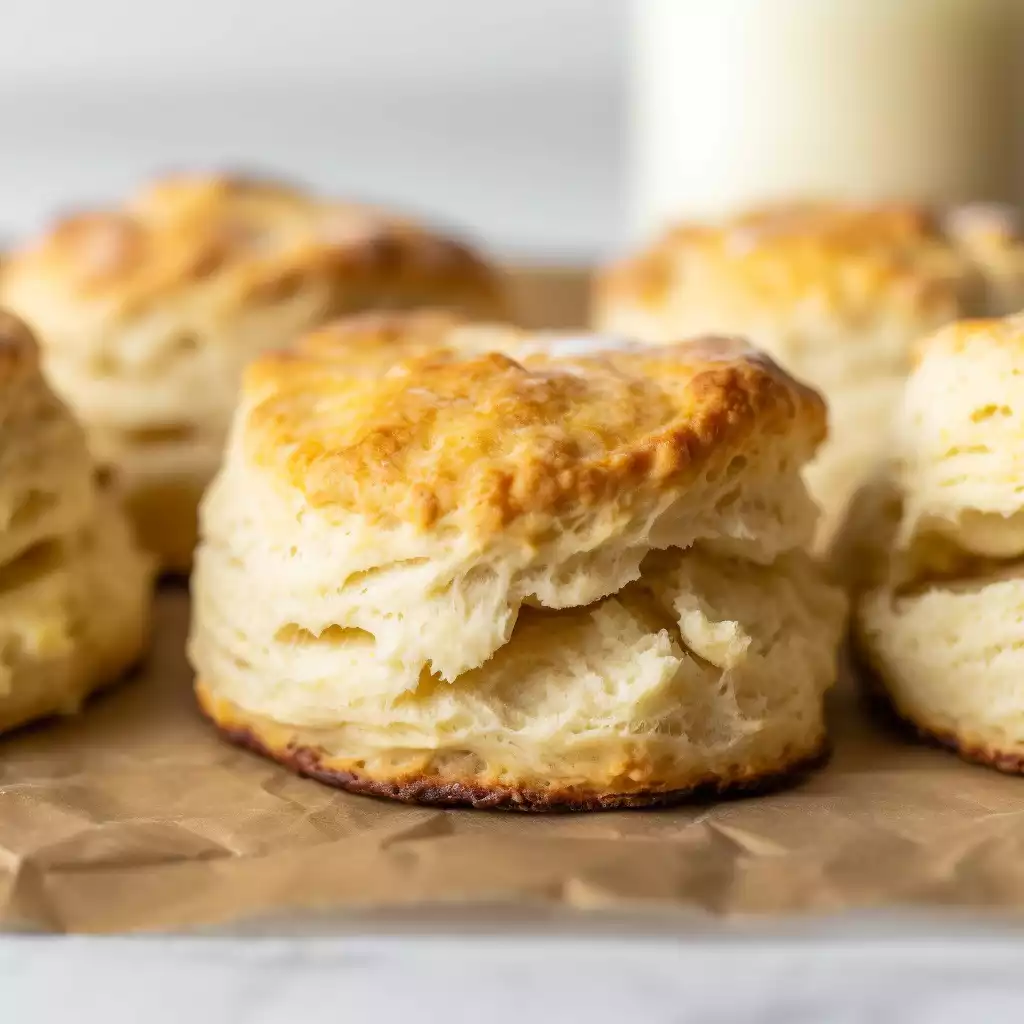
Buttermilk biscuits, a beloved staple of Southern cuisine, are a delight to the senses with their fluffy texture and buttery flavor.
Originating from the American South, these biscuits have a rich history tied to traditional home cooking and comfort food. Despite their simplicity, mastering the art of making perfect buttermilk biscuits requires patience and attention to detail.
Crafting these biscuits from scratch is a rewarding endeavor that invites you to experience the joy of homemade baking. With just a handful of ingredients and a few simple steps, you can create warm, tender biscuits that are perfect for any occasion.
Whether enjoyed as a side dish for breakfast, brunch, or dinner, these biscuits are sure to impress with their irresistible taste and aroma.
Expert Tip: For extra flavor, brush the tops of the biscuits with melted butter before baking.
All-Purpose Flour: Provides the base for the biscuit dough, giving it structure and texture.
Baking Powder: Acts as a leavening agent, helping the biscuits rise and become light and fluffy.
Baking Soda: Helps to create a tender texture in the biscuits by reacting with the acidic buttermilk.
Salt: Enhances the flavor of the biscuits and balances the sweetness of the other ingredients.
Butter (Unsalted, Cold, Diced): Adds richness and flavor to the biscuits while also contributing to their flakiness.
Buttermilk: Provides moisture and tanginess to the dough, resulting in tender biscuits with a subtle tang.
Expert Tip: Handle the dough gently and avoid overmixing to ensure tender, flaky biscuits.
Expert Tip: Keep the butter cold and work quickly to prevent it from melting into the dough, which can result in tough biscuits.
While margarine can be used as a substitute for butter in some recipes, it may affect the flavor and texture of the biscuits. Butter contributes to the rich flavor and flakiness of buttermilk biscuits, so using margarine may result in slightly different results.
Allow the leftover biscuits to cool completely, then store them in an airtight container at room temperature for up to two days. To maintain their freshness, you can also wrap the biscuits individually in plastic wrap and freeze them for up to three months.
Yes, you can freeze unbaked biscuit dough for later use. After cutting out the biscuits, place them on a baking sheet lined with parchment paper and freeze until firm. Once frozen, transfer the biscuits to a freezer-safe bag or container and store them for up to three months. When ready to bake, there’s no need to thaw the dough; simply place the frozen biscuits on a baking tray and bake as directed, adding a few extra minutes to the baking time if needed.
While regular milk can be used as a substitute for buttermilk in a pinch, it’s important to note that buttermilk adds a distinct tanginess and acidity to the biscuits that regular milk does not provide. To substitute, you can add one tablespoon of lemon juice or white vinegar to one cup of milk and let it sit for a few minutes to sour before using it in the recipe.
To ensure light and fluffy biscuits, avoid overmixing the dough and handle it as little as possible. Additionally, make sure your baking powder and baking soda are fresh and active, as they are crucial for the biscuits to rise properly. Finally, be sure to preheat your oven adequately and bake the biscuits until they are golden brown and cooked through for the best results.
Here are some more recipes for you to enjoy! If you my recipes don’t forget to rate and leave a comment.
If you have any recipe suggestions, please do not hesitate to ask me. A great way to stay in contact with me is through Instagram, Facebook, Twitter and YouTube. Don’t forget to tag me @CookwithNabeela in your recipe photos!

Subscribe now to receive my latest recipes directly in your inbox. Stay up-to-date and never miss out!
Add your first comment to this post